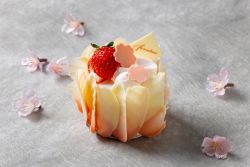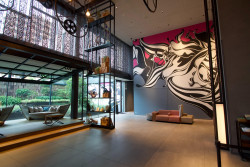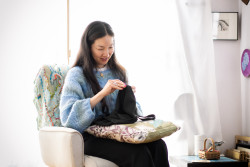
Originally published on metropolis.co.jp on March 2013

Most who live here have a “go to” brew; the one they reach for automatically at the conbini or dig from the ice of a summer cooler. But is the choice based on taste—or is it just prejudice? With St. Paddy’s Day around the corner, we put the Japanese beer blarney to the test.
Asahi Super Dry is often cited as the best-selling beer in Japan. But does the “silver bullet” deserve its market share? Or is Suntory Premium Malt’s—with its bizarre apostrophe—better? We decided to separate the barley from the chaff with a blind taste-test.
To narrow the field—and avoid wanton drunkenness—we used the five top-selling beers (conveniently covering each of the big four brewers: Kirin, Asahi, Sapporo and Suntory) plus a curveball at number six.
The contestants (prices from Kakuyasu, the discount booze broker):
1 Asahi Super Dry (¥195)
2 Kirin Ichiban Shibori (¥195)
3 Sapporo’s Yebisu (¥218)
4 Suntory Premium Malt’s (¥225)
5 Kirin Lager (¥195)
6 Suntory Rich Malt (¥114)
Though often mistaken for a happoshu, Suntory Rich Malt is an even lower class of the much-maligned “near-beers” littering store shelves across the country [for more on happoshu, see p05]. The low malt content means brewers pay less tax—and can therefore charge as little as half the price of a normal beer. We were keen to see if it’s really as bad as they say; or if it would warrant inclusion in your hanami basket or St. Paddy’s beer pong.
Before they were allowed to put cup to lips, our 19 test participants were asked two screening questions. The first was designed to set them up for embarrassment:
What is your favorite Japanese beer?
While eight respondents (42%) answered Yebisu to question one, the number who chose it in the blind taste test was a resounding zero. In fact, two of the eight ranked it dead last.
The second question was to quantify the anti-happoshu bias:
Would you rather drink a cold happoshu or a room-temperature Heineken?
This had an 11-to-7 split in favor of cold low-malt brew, with one belligerent respondent refusing to choose a lesser evil.
The pourers poured, the tasters tasted and to determine a winning brew, people ranked their six cups from best to worst.
The clear cut winner? Suntory Premium Malt’s. The most expensive can in the contest, it received double the first-place votes of its nearest competitor, though it was marked last on two ballots. It also scored best through our algorithm of one point for a first-place vote, two points for second, etc. This beer has allegedly won awards in Europe, so its high price may be justified.
Surprisingly, near-beer Suntory Rich Malt finished far from the bottom rung. That dishonor went to the second-most expensive (and some say prettiest) label: Yebisu. The Rich Malt also finished ahead of 5th-place Asahi Super Dry and 4th-place Kirin Lager. Is it possible that the default beers of millions are just not very good?
So there you have it: Suntory Premium Malt’s is the best mainstream beer to be found on convenience store shelves countrywide. And you can get away with serving happoshu at parties—if you use a glass.
Beerline
- 1724 Beer was first introduced by the Dutch. Incidentally, the word “beer” comes from the Latin bibere, which means “to drink”
- 1870 The first commercial beer brewed in Japan was produced by Spring Valley Brewery, Yokohama, by William Copeland, a Norwegian naturalized American who spent five years in Germany learning brewing techniques.
- 1872 The first beer brewed by the Japanese in Japan, called “Shibuya Beer,” made its debut in Osaka.
- 1876 The Hokkaido Kaitakushi Beer Brewery, the first brewery under governmental management, was established in Sapporo.
- 1901 The Beer Tax Law was enacted.
- 1920 The enforcement of Prohibition in the United States allowed surplus brewing equipment to be imported into Japan, resulting in the establishment of the Nitiei Brewery and Toyo Brewery.
- 1939 Price controls were introduced. Minimum quantity of beer manufacturing per brewery increased from 180 kl to 1,800 kl.
- 1953 The Brewers’ Association of Japan was established.
- 1959 Beer became the most popular alcoholic beverage in 1959 and has since then remained at the top.
- 1994 The minimum quantity of beer licensed for manufacture decreased to 60kl from 2,000kl. Many small regional breweries sprung up in response.
Source: National Tax Administration Agency







